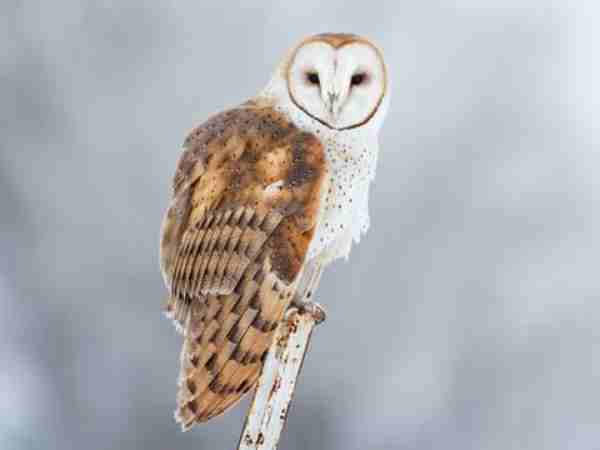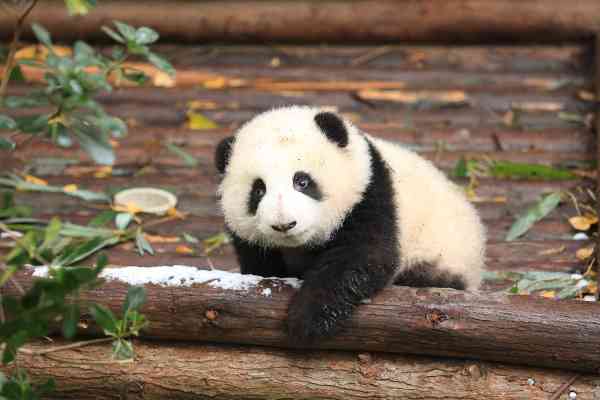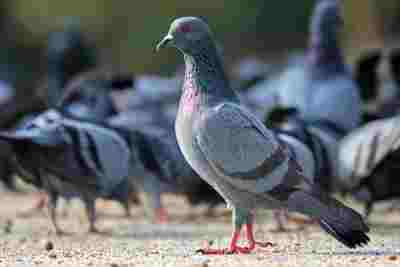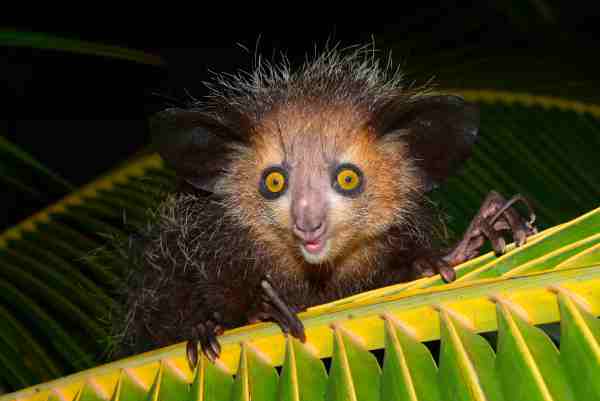While we all tend to associate babyhood with cuteness and adorability, some newborn animals simply don’t hit that cute factor. In fact, some creatures may even be considered a wee bit ugly in their early days. Today, we’ll be discussing these less-than-cute babes, ranging from birds to insects to mammals.
Table of Contents
Some may grow up to be the picture of loveliness, but others will remain less than stunning into adulthood. So without further ado, let’s dive into the top 10 ugliest baby animals of the animal kingdom.
10 Ugly Baby Animals
Naked Mole Rats

- Scientific Name: Heterocephalus glaber
- Type of Animal: Mammal
- What They Look Like: Pinkish, nearly hairless
Naked mole rats possess certain qualities that many other animals can only dream of an extended lifespan and resistance to cancer and other age-related ailments. With such remarkable attributes, one might envy the life of a naked mole rat. However, there is a drawback: naked mole rats produce unattractive offspring. Not only are their babies considered unsightly, but the adults also tend to have unappealing appearances.
The newborn naked mole rat pups have pale, wrinkled skin that lacks significant hair except for a few strands and whiskers. At birth, they weigh approximately 0.07 ounces, and they retain this appearance throughout their infancy and juvenile stages. When they reach 2-3 weeks of age, these young naked mole rats are nourished with the excrement of adult naked mole rats within the colony.
These peculiar creatures reside in underground burrows and are primarily found in the horn of Africa and Kenya.
Barn Owls

- Scientific Name: Tyto alba
- Type of Animal: Bird
- What They Look Like: Long beak, pinkish, covered in thin down
Barn owls possess an undeniable beauty as adult birds, but their appearance in infancy is a far cry from that elegance. Just hatched from their shells, barn owl babies are unattractive and bear no resemblance to their mature counterparts. The appealing features that make adults captivating become grotesque on the young barn owl hatchlings.
These chicks emerge into the world devoid of feathers, sporting a pink and hairless appearance that could easily be mistaken for extraterrestrial creatures. However, within a matter of days, they gradually begin to resemble barn owls in some aspects.
A barn owl owlet, as the baby is called, develops a narrower face with a heart-shaped contour, an elongated nose with distinct nose bridges, and a lengthy beak. Their skin is sparsely covered with feathers. These transformations take place over a period of 3-7 weeks.
During their early stages, barn owl babies consume a diet similar to that of their parents, including small mammals like rabbits, fish, insects, and other birds. However, they consume these prey items in smaller quantities. Their weight ranges from 1.4 to 2.1 ounces.
In general, these owl species can be found across all continents worldwide. As their name suggests, they establish their nests in barns and trees found on farms.
Warthogs

- Scientific Name: Phacochoerus africanus
- Type of Animal: Mammal
- What They Look Like: Brownish, covered in thin down
Regrettably, warthogs do not possess attractive features during their early stages of life and maintain an equally unattractive appearance into adulthood. The offspring of a warthog, known as a piglet, displays a dishevelled coat in shades of dusty black or coffee brown, adorned with light hairs. Some piglets may even exhibit contrasting black stripes on their backs.
The prominent tusks that characterize adult warthogs are absent in their offspring. At birth, a baby warthog weighs approximately 1 to 2 pounds. They remain in the juvenile phase for just one year from the time of their birth. During the first two months of their lives, they rely on their mother’s milk and gradually transition to solid foods.
As herbivores, baby warthogs consume a variety of plant-based sustenance, including berries, tree bark, grass, bulbs, and berries. They have a diverse diet that helps them grow and develop.
Warthogs primarily inhabit open savannas, with notable populations found in Mauritania, Ethiopia, Namibia, and South Africa. These regions serve as the natural habitats for these intriguing creatures.
Pandas

- Scientific Name: Ailuropoda melanoleuca
- Type of Animal: Mammal
- What They Look Like: Tiny, pinkish, hairless
It may be hard to believe, but it is indeed true – pandas have unattractive offspring. We typically envision pandas as adorable creatures with their black and white fur, rolling and swinging among bamboo trees all day. However, their young ones are born with a less appealing appearance.
When newborn, baby pandas, known as panda cubs, are entirely pink with patches of scattered hair across their skin. Their eyes are barely visible and remain closed until around 6 to 8 weeks later. In comparison to their mother, they are remarkably small at birth, weighing approximately 3 to 5 ounces.
Panda cubs remain in the baby and juvenile stages until they reach the age of 4 or 5. During the initial 6 to 9 months of their lives, they rely exclusively on their mother’s milk for nourishment. However, at this stage, they begin to transition to a diet consisting of bamboo.
Pandas inhabit secluded bamboo forests primarily found in the southeastern regions of China, particularly temperate bamboo forests situated at higher altitudes in the mountains. These environments serve as the ideal habitat for these beloved creatures.
Echidnas

- Scientific Name: Tachyglossidae
- Type of Animal: Mammal
- What They Look Like: Gray, quilless, smooth skin
As expected, the young echidnas are far from being attractive creatures during their early stages of life. While adult echidnas boast spines on their backs, baby echidnas, known as puggles, possess smooth and soft skin. They have elongated snouts, almost indiscernible eyes, and tiny nails.
Oh, and did I forget to mention their adorable pocket-sized nature? When hatched, a baby echidna weighs around 0.02 ounces and measures merely half an inch in length.
Not only do echidnas fall into the category of unappealing animals, but they also exhibit peculiar behaviours. Echidnas are unique egg-laying mammals, yet they provide milk to nourish their young. Unlike typical milk-producing animals, echidnas lack nipples. Instead, they have specialized patches on their abdomen that release milk, and their babies lap it up.
Echidnas can be found across various habitats in Australia and New Guinea, spanning from desert regions to snowy landscapes. Their widespread presence showcases their adaptability to diverse environments.
Pigeons

- Scientific Name: Columbidae
- Type of Animal: Bird
- What They Look Like: Pink skin, yellowish thin down hair
Among all the animals mentioned, baby pigeons undoubtedly possess the most amusing appearance. While adult pigeons may be considered adorable, the same cannot be said for their offspring.
A baby pigeon, also known as a squab, exhibits a peculiar combination of nearly translucent pink skin and yellowish hair-like feathers. Their beak, in this stage, is significantly underdeveloped and shares the same pink hue as their skin.
In their juvenile phase, pigeons primarily rely on “cropped milk” as a significant part of their diet during the initial four days. This is later followed by the consumption of seeds. Pigeons remain in their juvenile stage for a duration ranging from seven months to a year, leaving the nest only when they have nearly reached their full adult size.
Pigeons are remarkably comfortable in the presence of humans, which is why they can be commonly found in crowded areas such as parks, streets, city buildings, and bridges. Additionally, they can also be spotted near feed mills, farms, and certain pigeon species even inhabit coastal regions.
Sphynx Cats

- Scientific Name: Felis catus
- Type of Animal: Mammal
- What They Look Like: Pinkish, hairless
I might receive some differing opinions, but I’ll state it nonetheless: sphynx cats are animals with distinct appearance, and the same can be said for their offspring.
One striking characteristic of sphynx cats is their complete lack of fur, replaced by smooth and perspiring skin. The baby sphynx, known as sphynx kittens, exhibit even more pronounced features.
During their infancy, sphynx kittens possess pinkish and wrinkled hairless bodies that, to some, may resemble creatures from another world.
At birth, a baby sphynx weighs approximately 2.8 to 6 ounces and undergoes rapid weight gain in the following days, often doubling its initial weight.
Given that sphynx cats are commonly domesticated, mothers do not face any difficulties in feeding their kittens. Sphynx kittens are nourished with specially formulated kitten food that provides essential nutrients for their healthy growth.
Although these peculiar-looking cats originated in Canada, they are now kept as pets in various countries around the world.
Tapirs

- Scientific Name: Tapirus
- Type of Animal: Mammal
- What They Look Like: Brownish with body stripes
Tapirs maintain an unattractive appearance throughout their entire life cycle, especially in adulthood. However, when compared to adult tapirs, baby tapirs display a relatively more appealing appearance, despite still being considered unattractive.
A baby tapir, referred to as a calf, exhibits coffee-brown skin adorned with long and sparse stripes along its back. Additionally, cream-coloured polka dots can be observed on all four legs and the face of the calf. These young tapirs have prominent foreheads and elongated snouts resembling those of pigs.
At birth, baby tapirs weigh approximately 18 to 22 pounds. For the initial six months, they rely exclusively on their mother’s milk for nourishment before gradually transitioning to a diet that includes vegetables.
Young tapirs typically reach maturity between 12 and 18 months of age, at which point they become independent from their mothers.
With the exception of mountain tapirs, all tapir species inhabit the forests and grasslands of Central and South America. These regions serve as the natural habitats for these intriguing creatures.
Robins

- Scientific Name: Turdus migratorius
- Type of Animal: Bird
- What They Look Like: Pink/transparent skin, hairless
When discussing unattractive baby animals, we cannot overlook robins. These newborn chicks start off weighing around 0.2 ounces and gradually grow to about 1.9 ounces within fourteen days of hatching from their distinct teal-coloured eggs.
Baby robins, known as hatchlings, exhibit a peculiar appearance. They possess a bare reddish-pink underbelly, sparsely feathered upper bodies, delicate long necks, and disproportionately large heads.
Around 14 to 15 days old, these hatchlings begin their journey out of infancy, and their first task is often unintentionally falling out of their nest. During the initial four days after hatching, the baby robins are nourished with partially digested food provided by their parents.
After five days, they gradually transition to consuming distorted earthworms delivered to them by their parents, eventually progressing to consuming whole worms and insects.
Robins are classified into various subspecies, with each subspecies predominantly found within a specific continent, reflecting their geographic constraints.
Aye-ayes

- Scientific Name: Daubentonia madagascariensis
- Type of Animal: Mammal
- What They Look Like: Brownish, bald head with sparse body hairs
It is not just the ugliness but the incredibly eerie appearance of a baby aye-aye that sets it apart. Known as an infant, a baby aye-aye consistently wears an expression of surprise or fear due to its large eyes.
These little creatures make peculiar facial expressions, such as opening their mouths wide and sticking out their tongues. Their digits are not fully developed yet, and they have notably large ears.
However, it is likely that you will agree with me when I say that even adult aye-ayes appear rather intimidating and unattractive.
A baby aye-aye possesses a partially bald head, while its back is covered in longer and spikier hairs compared to adult aye-ayes. These infants are born relatively underdeveloped and typically weigh around 3.2 to 5 ounces.
Juvenile aye-ayes are weaned at the age of two months and separate from their mothers approximately two years later, marking their transition into independence.
Aye-ayes are indigenous to the tropical forests of Madagascar, a vast island located off the southeastern coast of Africa. These unique creatures call this habitat their home.
Final Words
It’s fascinating to see how certain animals go from unattractive newborns to cute and cuddly adults, while others remain just as visually unappealing throughout their lives. Take, for example, the panda and the barn owl — two animals that many people would consider adorable — but if you saw them as babies, you might think differently. On the other hand, animals like tapirs, sphinx cats, warthogs, and aye-ayes are all born with a certain lack of appeal, and they retain these traits throughout their lives.
Reference:
- https://www.insider.com/baby-animals-that-grow-up-to-look-different-2019-2
- https://www.britannica.com/story/why-are-the-babies-of-mammals-cute
- https://www.oddsfarm.co.uk/wp-content/uploads/2017/02/EYFS-Lifecycles.pdf

Zahra Makda
Growing up enjoying the beauty of my village, a good passion for nature developed in me from childhood. Following my passion for the natural world, I have chosen zoology for my graduation, during my undergraduate degree, I participated in many nature trails, bird watching, rescues, training for wildlife conservation, workshop, and seminars on biodiversity. I have a keen interest in invertebrate biology, herpetology, and ornithology. Primary interests include studies on taxonomy, ecology, habitat and behavior.









